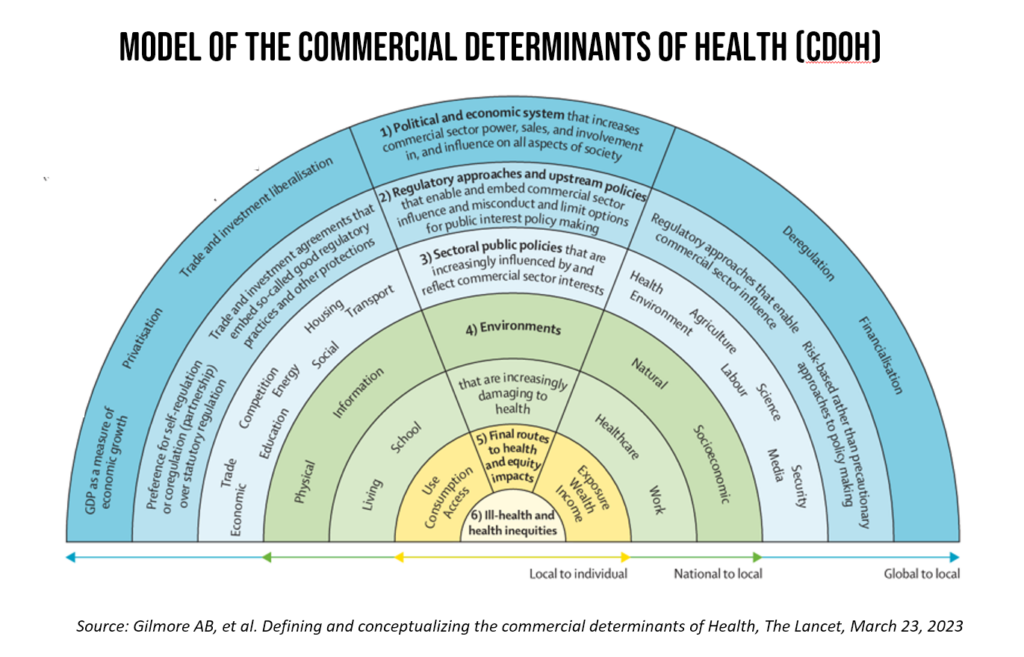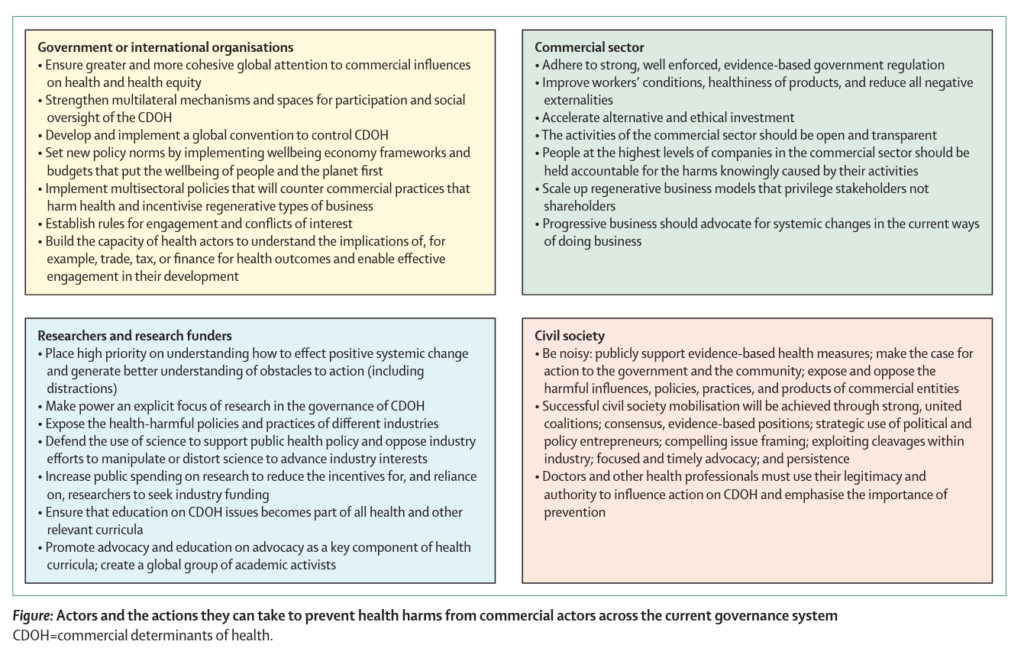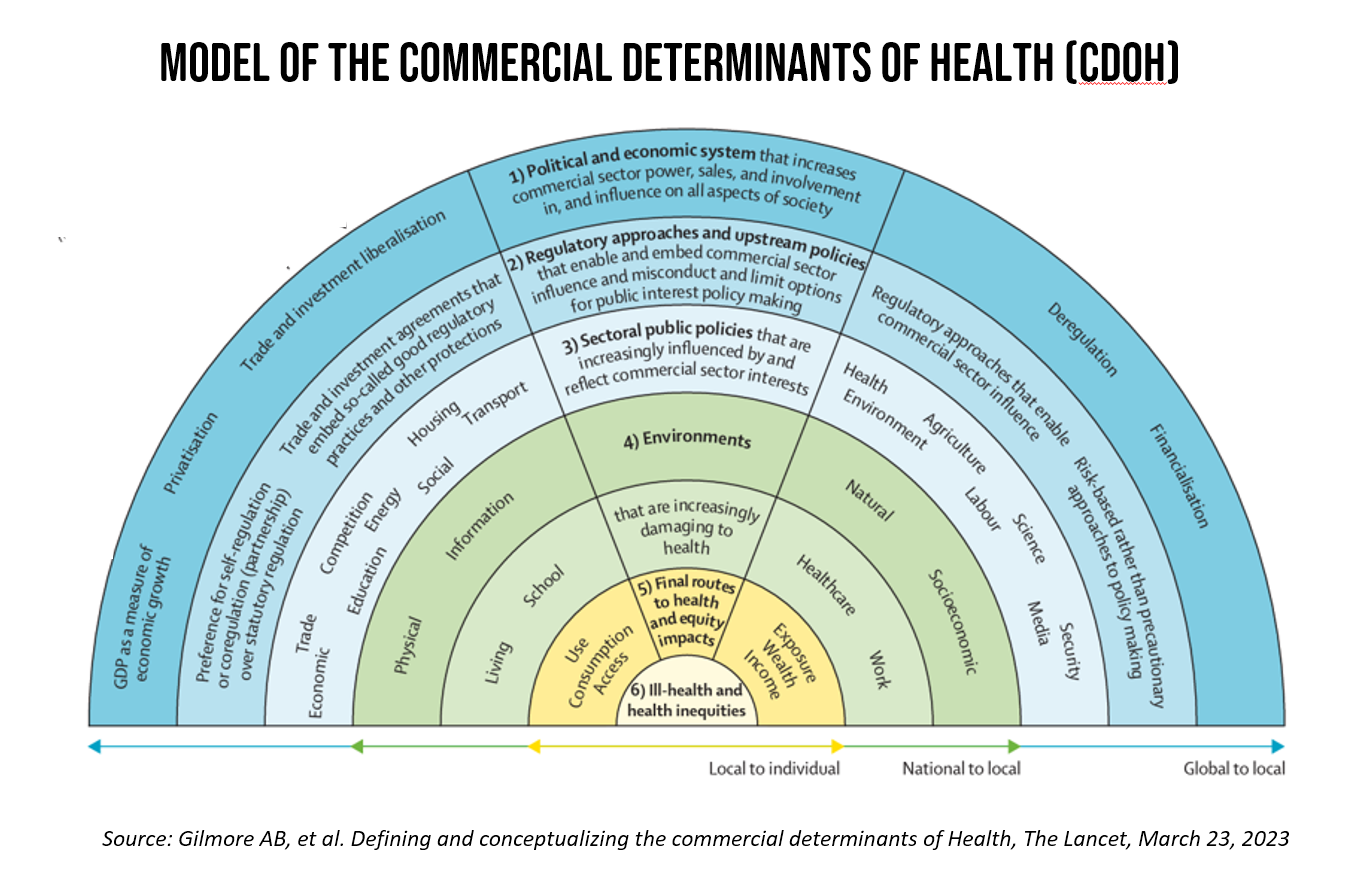You’ve heard of the social determinants of health (SDoH), the driving factors that shape a person’s health beyond medical care. These include lifestyle behaviors such as smoking and food consumption, education, job security and wage stability, transportation and safe/clean physical environments, among other issues.
There’s another lens on drivers of health that impact our well-being, the commercial determinants of health (CDoH). The Lancet‘s collection of research published online on March 23, 2022 explores CDoH’s role in shaping public and individual health, along with potential calls-to-action for addressing these challengres.

Start with a definition of CDoH: “the systems, practices, and pathways through which commercial actors drive health and equity,”
The introduction to the series provides context for the series:
“Commercial actors can contribute positively to health and society, and many do, providing essential products and services. However, a substantial group of commercial actors are escalating avoidable levels of ill health, planetary damage, and inequity—the commercial determinants of health. While policy solutions are available, they are not currently being implemented, and the costs of harm caused by some products and practices are coming at a great cost to individuals and society.”
The first graphic was embedded in the first essay covering the definition and concepts baked into the Commercial Determinants of Health; the diagram weaves together a range of research into social determinants, with a lens on the private sector dynamics that drive commercial entities to act in the ways they do — translated into seven “practices” or action areas: political, scientific, reputational management, marketing, supply chain and waste, labor and employment, and financial.
The half-circle diagram here illustrates the complexity and inter-related CDoH factors that shape a person’s health and the inequities or disparities that may result based on the person’s individual situation. It’s complicated, thorny, overlapping stuff: for simplicity, following the numbers (1) through (6) to get to the person’s health and equity status —
- Political and economic systems that increase commercial sector power, sales, and involvement and influence on society
- Regulatory approaches and upstream policies that enable commercial sector influence and potential misconduct, limiting options for public interest policy making
- Sectoral public politics increasingly influenced by commercial sector interests
- Environments that can be damaging to health
- Final routes to health and equity impacts and, finally,
- Ill-health and health inequities.

As Sharon Friel and colleagues conclude in their look into CDoH and future directions, “Health professionals and other civil society groups must take a leadership role in ensuring that they,” that is “we,” rally support for growth coupled with social progress.
Health Populi’s Hot Points: Solving the Big Problems and drivers that underpin health and well-being require collaboration across public and private sectors, and siloes across the health/care ecosystem.
We know that the industry segments that make health in our homes and communities involve organizations well beyond medical care SIC codes — in addition to the legacy system players of hospitals and physician practices, health insurance plans, pharma, life science, and medical technology companies, we must add into our sandbox players food and grocery stores, transportation, education, financial services, consumer goods (fast-moving “soft” and “hard” goods like appliances such as washing machines), and to be sure, technology (from communications and connectivity to consumer electronics).
It’s great to see the Commercial Determinants of Health getting their deserved attention in The Lancet. Let’s keep them top-of-mind as we continue to solve for public, community, and peoples’ individual health. And make the connections in our own work flows to organizations that may not be obvious direct stakeholders in our constituents’ well-being. Let’s be inclusive when it comes to CDoH.

If you’re intrigued by my call-out of washing machines, see my post on Whirlpool’s #CareCounts effort to draw school students back to learning through the mission of clean clothes.
And learn what Arkansas Blue Cross Blue Shield is doing with washers and dryers tied to community health.
As Whirlpool’s mantra asserts, Every Day, Care.





 Thanks to Feedspot for naming this blog, Health Populi, as a
Thanks to Feedspot for naming this blog, Health Populi, as a